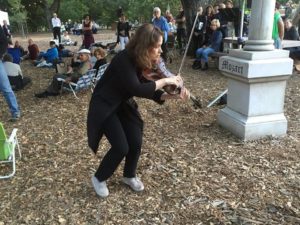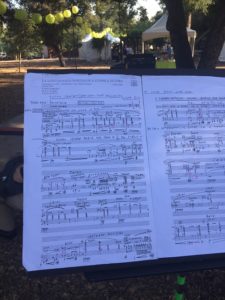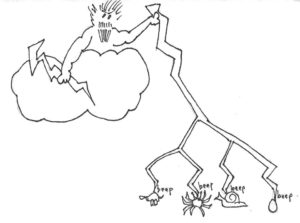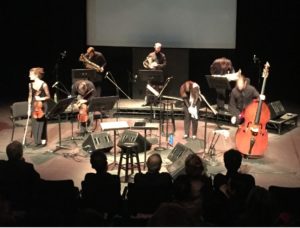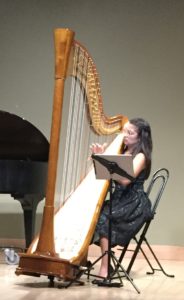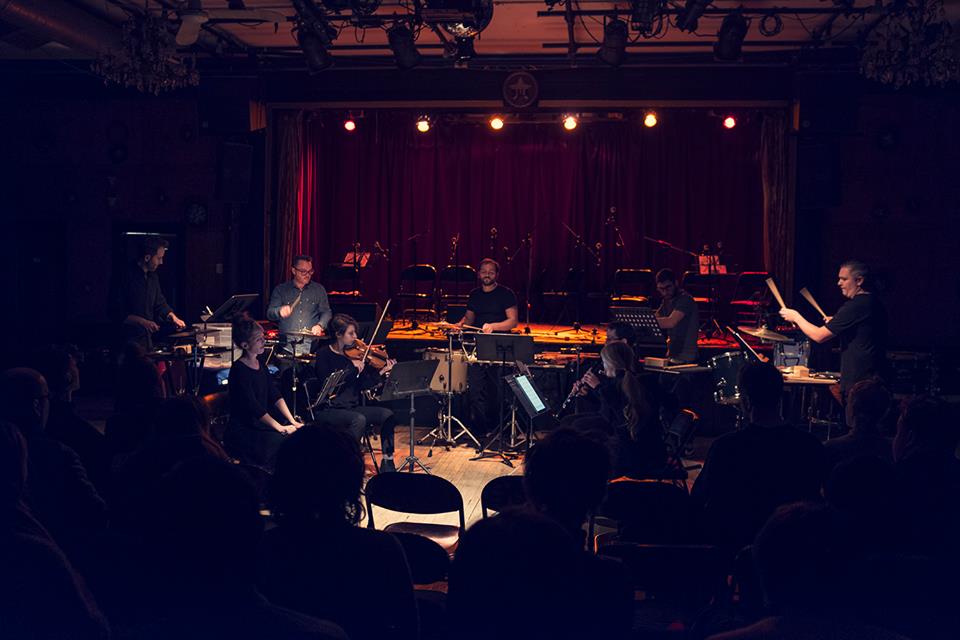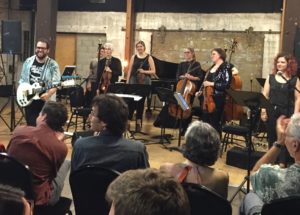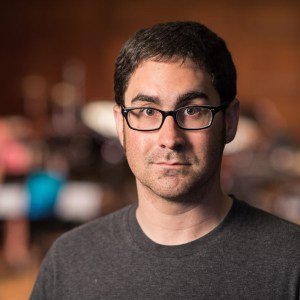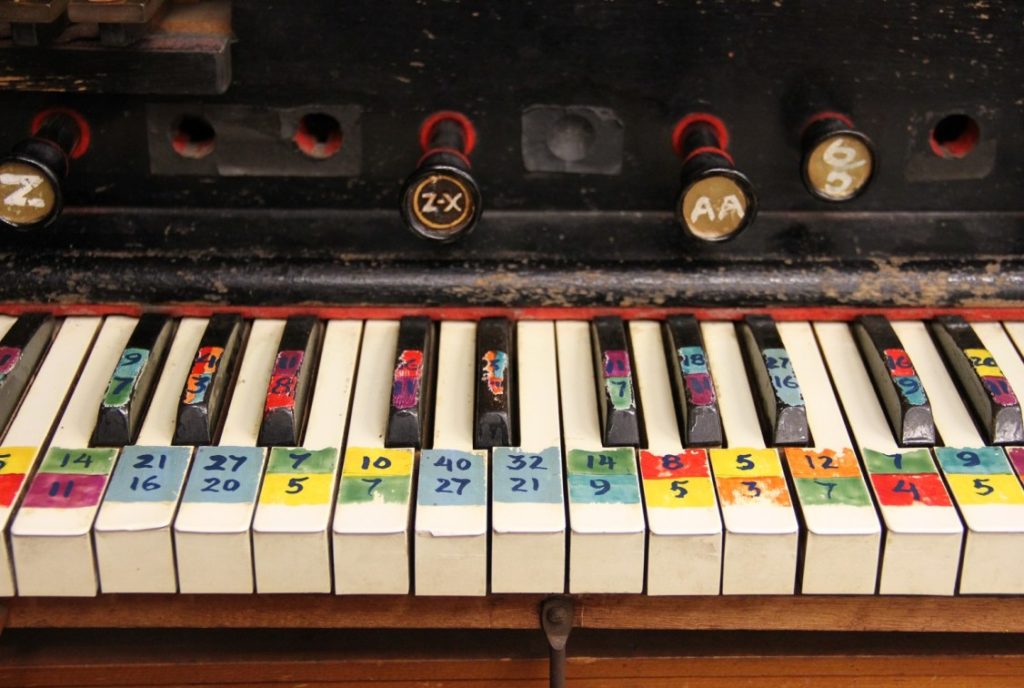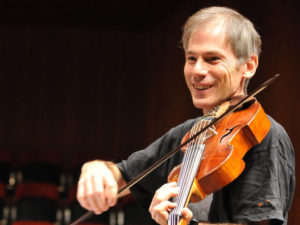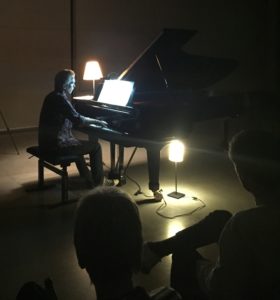 The 14th annual Dog Star concert series rolled into The Wild Beast at CalArts on June 9, 2018 and featured the Los Angeles appearance of the noted Dutch pianist Reinier van Houdt. A fine crowd assembled in The Beast despite a brush fire that shut down two lanes of the local freeway. Four contemporary solo piano pieces were on the program as well as Concert for Piano and Orchestra, by John Cage.
The 14th annual Dog Star concert series rolled into The Wild Beast at CalArts on June 9, 2018 and featured the Los Angeles appearance of the noted Dutch pianist Reinier van Houdt. A fine crowd assembled in The Beast despite a brush fire that shut down two lanes of the local freeway. Four contemporary solo piano pieces were on the program as well as Concert for Piano and Orchestra, by John Cage.
Layers for Piano, by Nomi Epstein, opened the program and began with a series of soft, single notes followed by brief chords. A deep rumble was occasionally heard in the lower registers, but the opening pattern of a few notes plus a simple chord persisted as the piece proceeded. The phrasing was consistently spare but engaging, with a quietly mysterious feel. The emotional delivery was impressive given the economical use of sound and masterfully restrained touch by van Houdt. The soft nebulous edges of Layers for Piano artfully evoked a comfortable float on a feathery cloud.
More quiet music followed with Pythagorean Study for piano and electronics, by Andrew Young. Short two-note chords separated by silence were repeated, as if some signal were being transmitted. As the piece proceeded this muted pattern repeated, with the notes changing pitch or played in a different register. The overall effect was to create a wistfully nostalgic sensibility from just this simple construct. The soft keyboard playing by van Houdt was the critical element here, and the listening was like basking in a collection of warm memories. Also, by Jennie Gottschalk followed and this displayed a similarity to the Young piece in that it consisted of quietly simple chords. These included dissonance as well as a somewhat darker tone in the lower registers. Although carefully subdued, Also contained a slightly sinister feel that was enhanced by the accelerando towards the finish. Rapid high and low notes completed the drama at the ending.
Trapani, by Jerry Hunt followed, and this 1989 solo piano piece provided a lively contrast to the more reserved music heard in the program to this point. Strong tremolos rippled through the highest and lowest registers of the keyboard producing an agitated feel full of anxiety and tension. A great wash of notes continued with a distinctly fluid feel, like some darkly churning waterway in full flood. The dynamics rose and fell like a surging tide, cresting to an impressive level, only to pull back again. The texture was a mass of continuous motion, as if driven by waves on a stormy sea. The extended tremolos, the variations in volume and intensity were all skillfully executed by van Houdt, whose precise control over the keyboard never wavered. Trapani is an expressive and animated conjuring of the powerful natural forces at work all around us.
